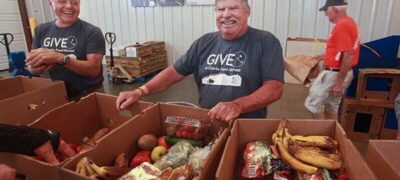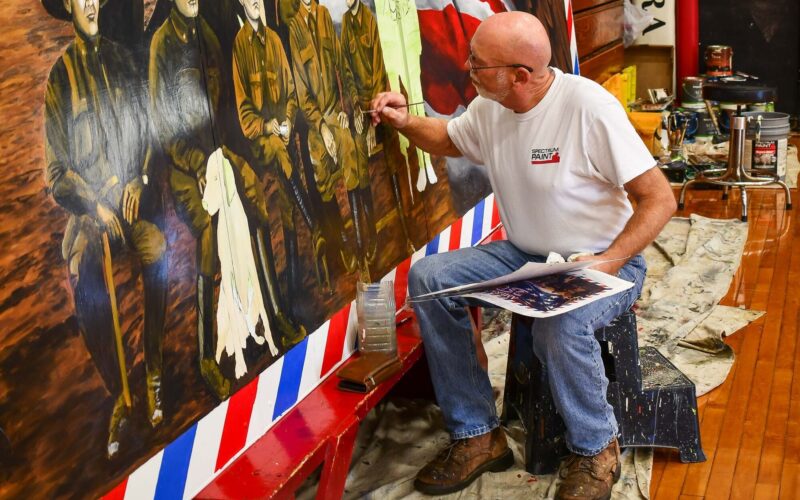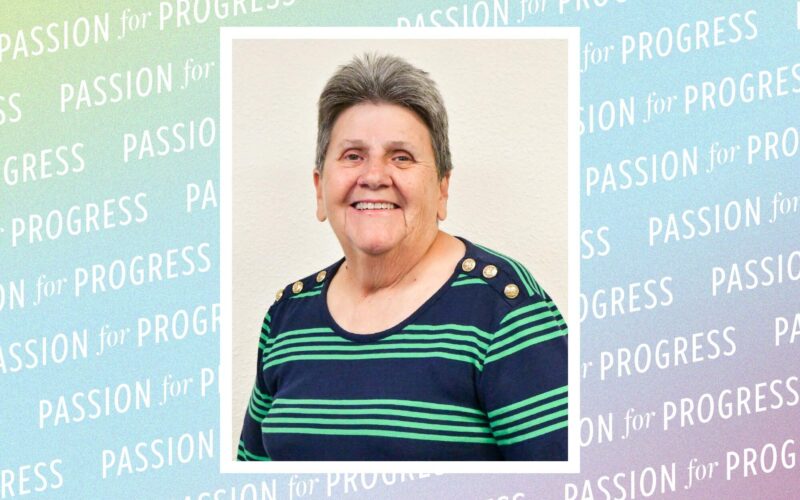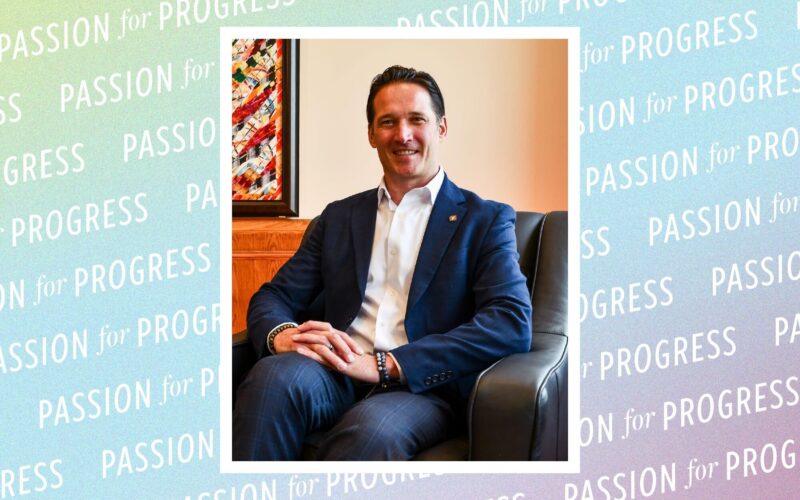passion & purpose: fall 2025
With support from grantmakers, Drew Lewis Foundation’s Blue House Project Revitalizes Grant Beach in Springfield
The house at 1036 W. Calhoun isn’t blue and probably won’t end up blue, but it’s a standard-issue development for the Blue House Project, the Drew Lewis Foundation’s community revitalization program in Springfield’s Grant Beach neighborhood. On a late-summer day, DLF’s Mike Stevens and Luke Job show off the modest two-story home in its final stages of renovation.
“One of my favorite things is walking through houses with [site supervisor] Chris Wilson or Amy [Blansit, DLF’s CEO],” says Stevens, the Blue House Project coordinator. “They’ll say, ‘We can open this up, move the ceilings, change the kitchen.’ Amy has incredible spatial vision — she can modernize a space while keeping the historic character. But really, we think these old homes are beautiful and worth saving.”
Saving homes that private developers overlook is only part of the story. “It’s getting people into homes, it’s renovating worthy homes, it’s building a sense of neighborhood and community in Grant Beach,” Stevens said of the project’s overall goals.
ROOTED IN ‘RISE’
The project’s roots stretch back to the Northwest Project, a five-year effort launched in 2016 to address poverty in Springfield’s Council Zone 1. Amy Blansit recalls: “It started out with Chris Craig and I going to places like OACAC and learning about their services. He and I are both [Missouri State University] professors, so we really wanted to focus on data and research as a foundation to the project.”
NWP — which would evolve into RISE, short for “Reaching Independence through Support and Education” — was a collaborative effort on several levels. Partners included MSU, Drury University, Multipli Credit Union and other financial institutions, and dozens of community agencies and businesses. The project was initially funded by the Jeannette L. Musgrave Foundation, the Stanley and Elaine Ball Foundation, and a $500,000 grant from the CFO, the largest single grant in the organization’s history.
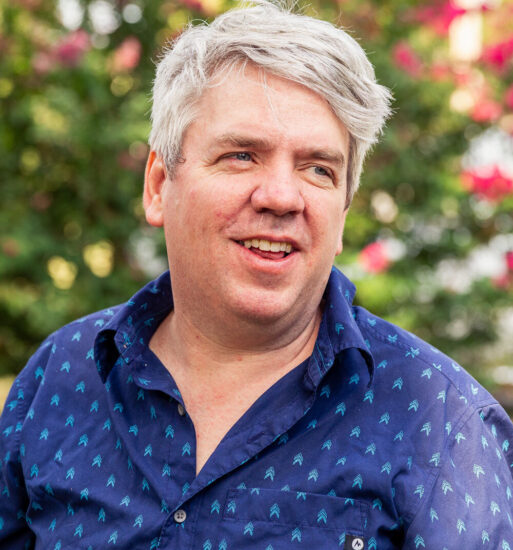
"It's getting people into homes, it's renovating worthy homes, it's building a sense of neighborhood and community in Grant Beach." — Mike Stevens, Drew Lewis Foundation
The core of the RISE program is a 17-week holistic life-skills course built on the understanding that lifting people out of the cycle of poverty requires long-term and intentional support. Blansit ended up writing the curriculum herself and assigning research to MSU graduate students, which allowed for turn-on-a-dime flexibility. “We listened to families, surveyed constantly and built new courses based on their needs,” she says.
A surprise need that arose along the way — and a lack Blansit saw in other poverty-reduction programs — was a focus on banking. “We were looking at, ‘why are these families not in banking?’” she says. To rebuild credit score and banking relationships, RISE’s curriculum offers a special focus on long-term financial wisdom. DLF also created a fund at Multipli Credit Union that families in RISE could borrow against. “We took on the risk, but it’s been since 2016, 2017 and the fund’s still there and families are still borrowing against it.”
BLUE HOUSE’S BUILDING BLOCKS
This focus on the long-term, on the complete picture, laid the groundwork for the Blue House Project. In their careful collection of data, DLF staff saw that housing conditions weren’t improving among RISE graduates. Lower-income families were hit hard by rising rents, slumlord conditions and lack of quality housing.
At the time, Blansit learned that only about 40% of the homes in Grant Beach — home of The Fairbanks, where DLF is based, and where Blansit herself resides — were owner-occupied; the rest were rentals. “We know how that affects the school and the mobility of kids in and out of the school,” she says. “We know how it affects crime rates.”
The Blue House Project began when Blansit noticed a vacant house across from The Fairbanks. The owners, a family that had put a lot of care into the home, didn’t want it to become a rental. Partnering with a funder, the foundation bought and renovated it. The house was blue; the project had a name.
Since then, DLF has renovated more than 30 homes, nearly all in Grant Beach. About two-thirds are sold below market value to low-income families, often RISE graduates, with down-payment assistance from the City of Springfield and Restore SGF. “If it’s one of our families, we typically do $10,000 below market value,” Blansit says. The other third are sold at market rate to create mixed-income neighborhoods.
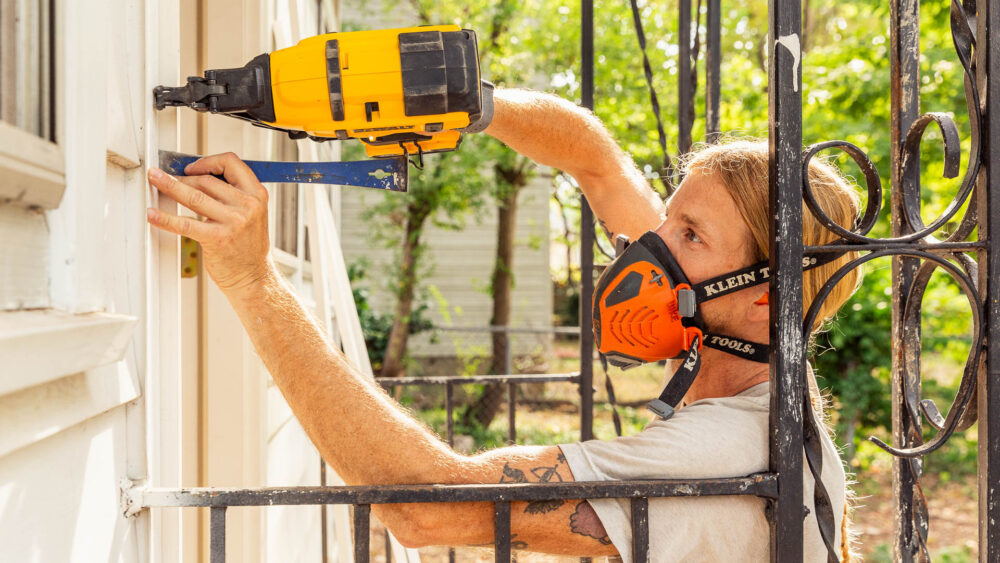
Luke Job, carpenter for Drew Lewis Foundation’s Blue House Project, nails trim around the back door of a house in Springfield’s Grant Beach neighborhood. The house, pictured below, will be sold below market value to a family in DLF’s RISE program to help the family build financial equity.
The success of the Blue House Project has earned the backing of grantmakers. In fall of 2024, the project received $36,145 in the inaugural grant round of the Generosity Collective, a high-impact giving circle supported by the CFO. And last summer, the Musgrave Foundation selected the Blue House Project for a “Keys to Housing” Multi-Year Impact Grant totaling $300,000 over three years to expand its impact in Grant Beach. A big goal, Blansit says, is to “get the balance of homeownership and rentals to about 50-50” in the neighborhood.
While the foundation hopes to see the project expand in other parts of Springfield, the focus on neighborhoods will remain key. Stevens sees the project as “community through proximity. You’re close enough that you interact with each other — and that makes us better as a community and as a neighborhood.”
— by Matthew Stewart
